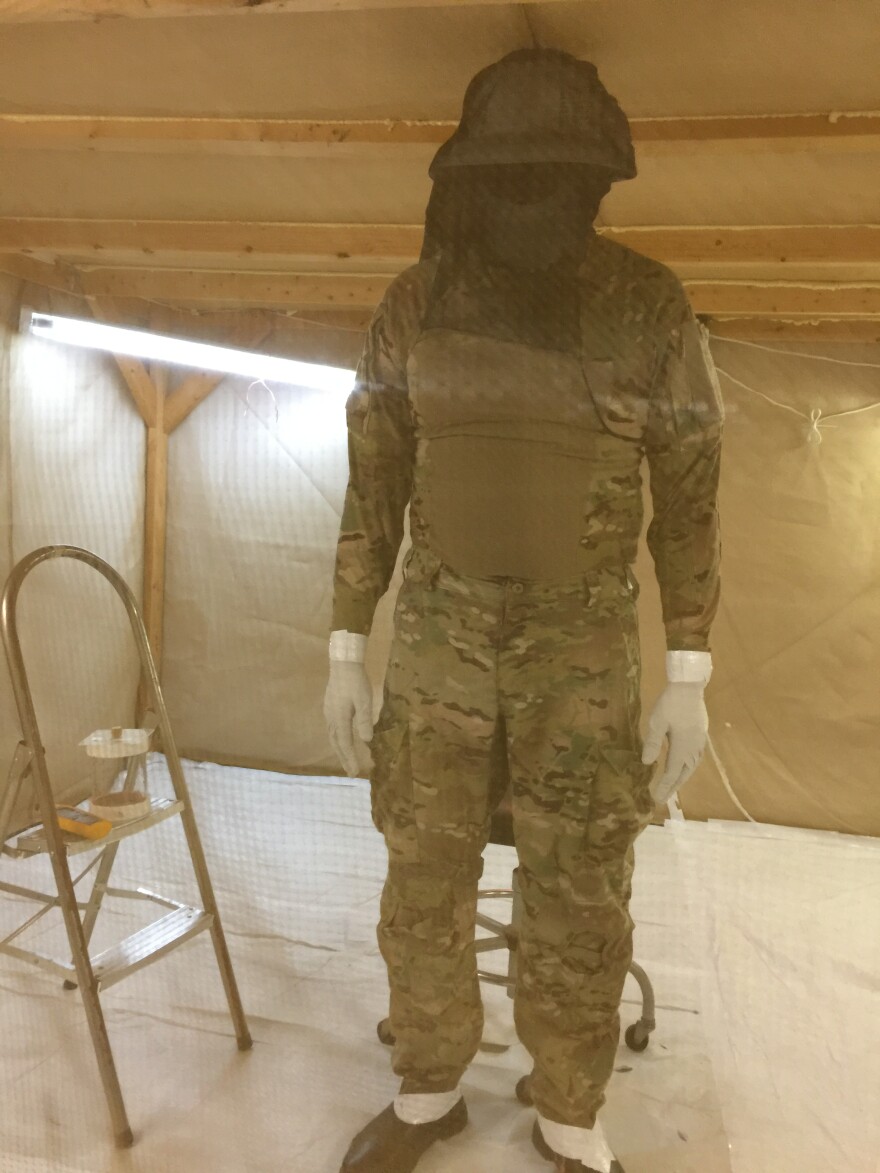When Katie Henson’s mom and grandmother visited from California to move her into her North Carolina apartment, she decided to take them bird watching at a lake near the Research Triangle. It was her first time summer birding in the state, and she figured the only outdoor variables she’d have to deal with were the heat and humidity.
What she didn’t expect were the bugs.
“You could not walk two feet without mosquitoes covering your arms and legs,” Henson said. “We went out in, like, shorts and tank tops, completely unprotected with any manner of bug spray. And instantly, I knew that we had made a grave mistake.”
Henson remembers taking a few blurry bird photos as dense clouds of mosquitoes swarmed around. She says she and her family sped through the trail, swatting at their arms and legs. At the end of the encounter, her grandmother had over 100 bites.
“I wondered if we were going to make it out alive,” Henson said. “I thought they would really just drain up all our blood or something because they were relentless.”
One of my fav photos ever. Taken while desperately trying to photograph a Carolina Wren(?)…by a lake in NC…in the summer…with no bug spray 🤦🏻♀️ this photo alone probably cost me like 5 mosquito bites 🦟
— Katie Henson🪶🇨🇺 (@nerdy4birdy)
Crunching Numbers to Beat Bug Bites
Mosquitoes can be relentless, dealing out itchy bites that can spread deadly diseases like malaria and yellow fever. the mosquito kills more people than any other creature in the world.
Most tips to avoid getting bitten involve wearing insect repellent or clothing that’s been treated with an insecticide. But researchers at North Carolina State University may have found a new way to stay bite-free. They’ve developed clothing made from a fabric that mosquitoes can’t pierce through for a meal, with no repellent required.
in the journal Insects last month. a new company established at NC State, has licensed the clothing tech with the goal of bringing it to the public.
“Our hope is that you could go to a local retail store and purchase garments, if not for adults or for children, that would be bite resistant,” said Michael Roe, a professor of entomology and toxicology at NC State and a co-author of the study.
Our hope is that you could go to a local retail store and purchase garments, if not for adults or for children, that would be bite resistant.Michael Roe
Roe and his co-authors designed clothing to serve as a physical barrier preventing a mosquito from taking a blood meal. They needed to create fabric thick enough to keep mosquitoes from piercing the skin for a bite, but thin enough to still be comfortable.
“No one’s going to go jogging with a pair of pants that’s made from mosquito net. It’d look silly, right?” said Roe. “The idea is it’s going to be the clothing you buy now. This is going to be something you want to wear.”
To accomplish that, Kun Luan, a postdoctoral research scholar at NC State’s Wilson College of Textiles, helped develop a mathematical model that predicted what fabrics were most bite resistant. He says the model related elements of a mosquito’s biting behavior, like its head and mouthpart size, to fabric pore size and thickness.
“On the one hand, we needed a very dense material that cannot allow mosquito bites through the [fabric] structure,” Luan said. “But on the other hand, garment comfort requires pores to make airflow go through the structure. This is a trade-off relationship, so we needed to find a very critical point.”
Mosquito-Proof Clothing on the Market
The researchers first tested their fabrics with animal blood. They later ran a trial where a volunteer wearing the bite-proof shirt stood in a mosquito-filled cage for 10 minutes, and accumulated 0 bites.
According to Roe, the group wants to present the public with a viable alternative to insecticide-treated clothing.

“They can decide whether they want to put an insecticide-treated garment on their one year old, or maybe a product that works as good or better, but has no chemistry in it,” Roe said.
Researchers say the clothing is one of the first to use a physical barrier to repel mosquitoes instead of insecticides. Further study is needed to find out if a short-sleeved shirt is enough to deter mosquitoes from going in for a bite, or if long-sleeved shirts and pants would be necessary for complete coverage.
Catherine Hill is a professor of entomology at Purdue University who was not involved with the study. She wants to see the clothing tested in the field to make sure it’s not only bite-proof, but can also prevent the spread of mosquito-borne diseases.
“The obvious next step is to show that a group of people who are wearing this new technology are not only protected from bites, but we have the capability to actually prevent acquisition of infectious diseases,” Hill said.
According to Vector Textiles president Mark Self, the company wants to partner with clothing manufacturers and outdoor apparel brands to start producing and selling the garments. He says they aim to get bite-proof clothing to the public by late 2022.
That’s welcome news for Henson, whose mosquito bites have finally faded from her lake encounter earlier this summer. She has no ill-will towards mosquitoes, but is planning on taking all the necessary precautions the next time she ventures back to the lake.
“I will just be more cautious, laugh about it, feel fortunate that we didn’t contract some kind of disease, and move on,” said Henson.







